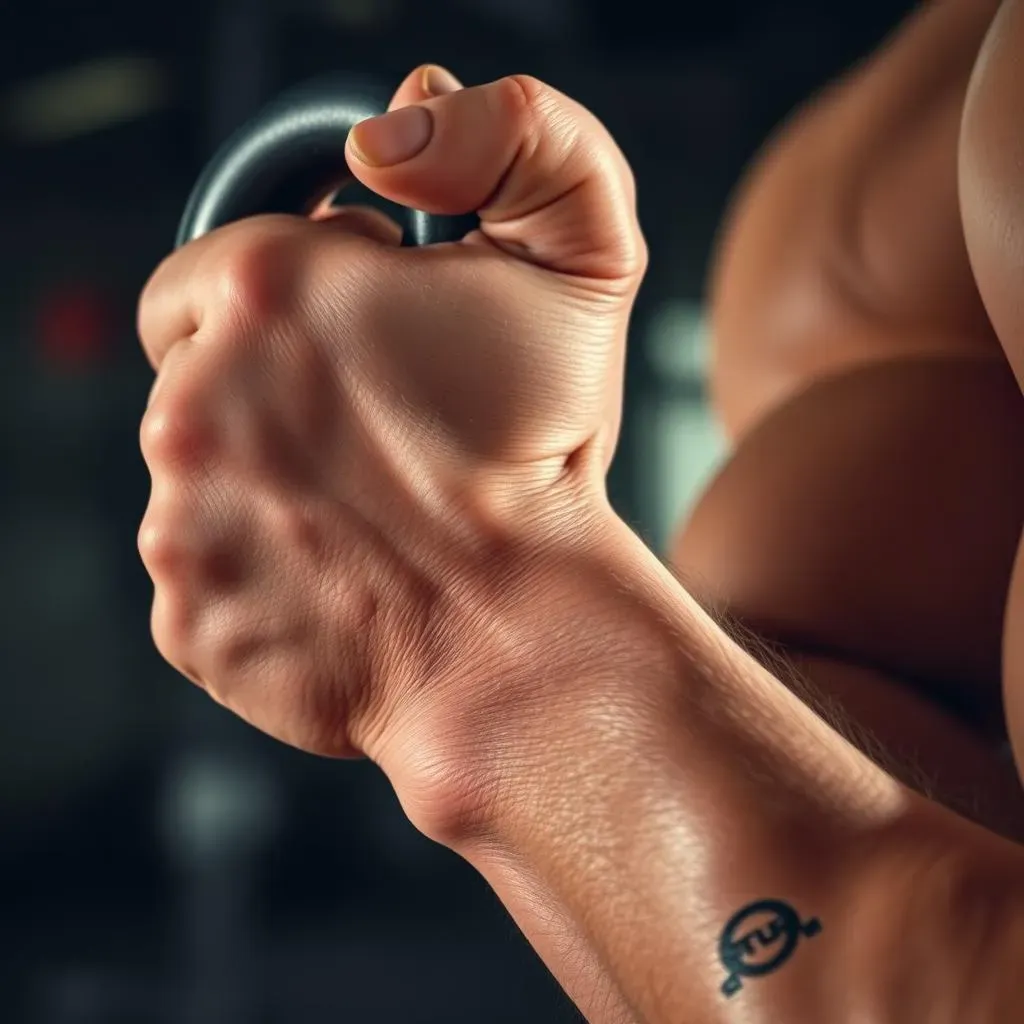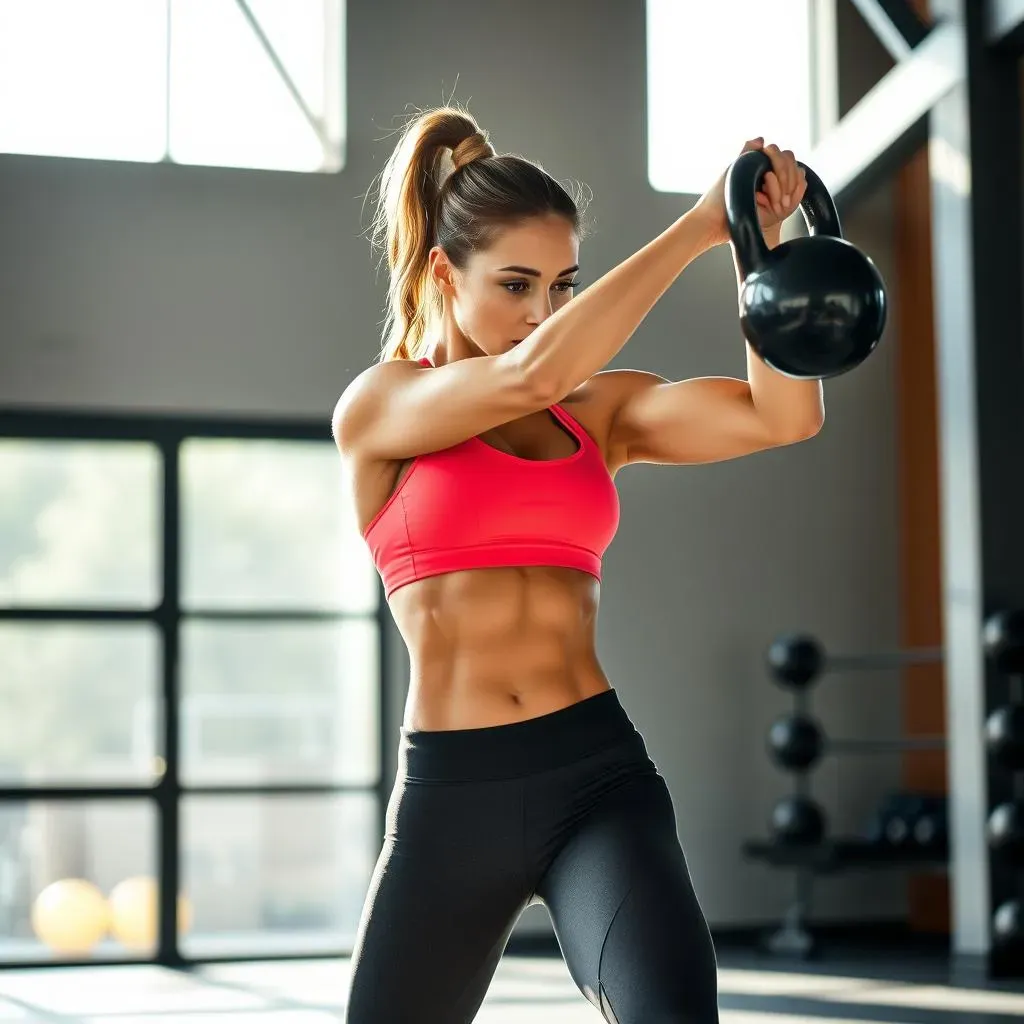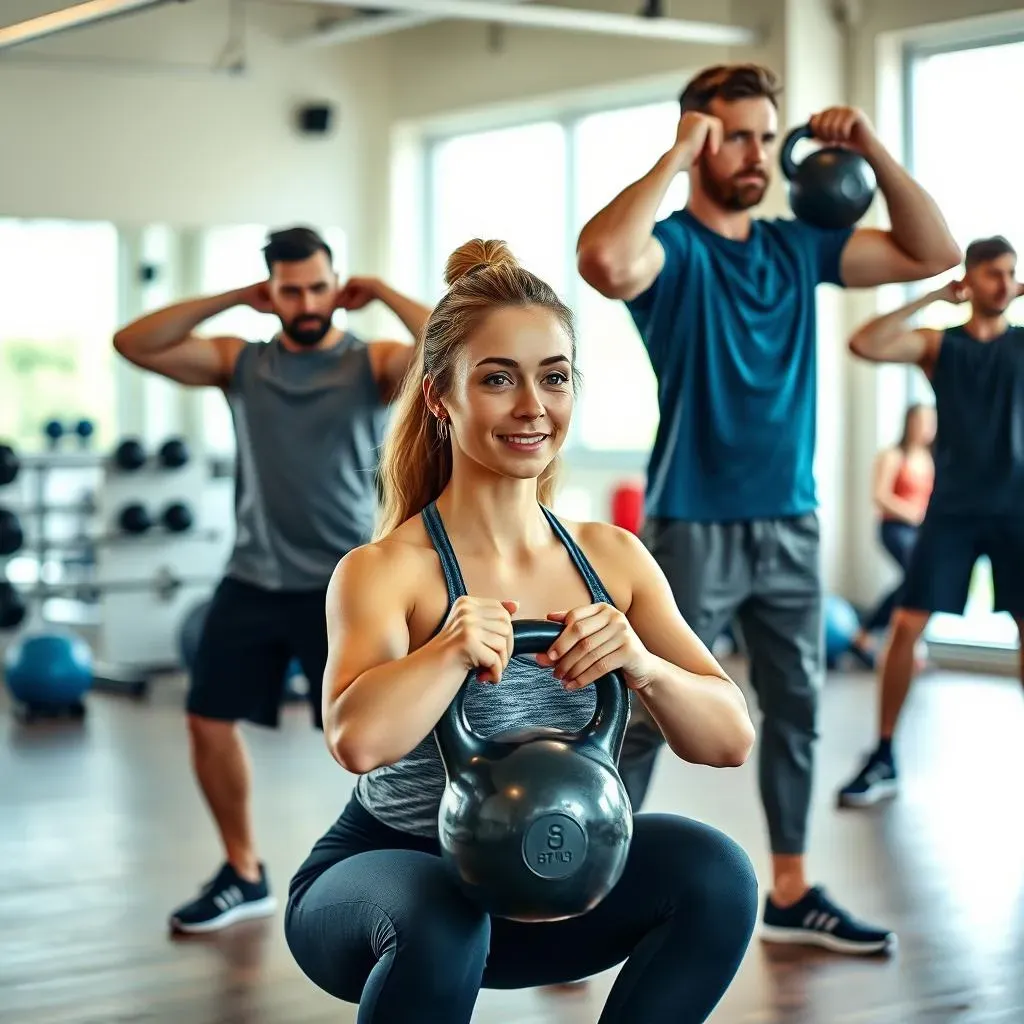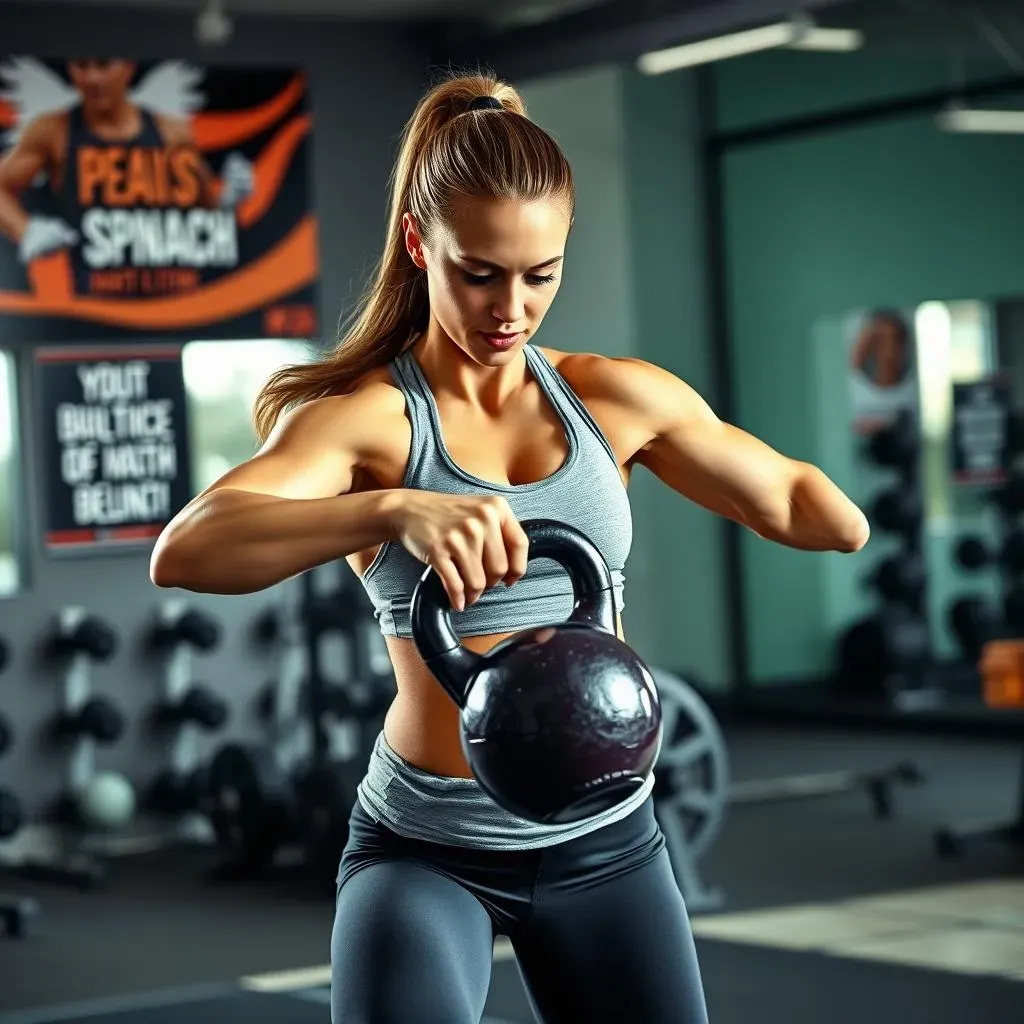Table of Contents
Ready to torch calories, build strength, and sculpt your entire body? A kettlebell workout for beginners full body is your ticket to achieving those goals, all from the comfort of your home or a quick session at the gym. Kettlebells aren't just trendy fitness tools; they're incredibly effective for functional training, improving your overall fitness, and making you feel like a total badass.
Mastering the Basics: How to Hold a Kettlebell for a Full Body Workout

Mastering the Basics: How to Hold a Kettlebell for a Full Body Workout
The Foundation: The Kettlebell Grip
Alright, listen up, because how you grip that kettlebell is EVERYTHING. It’s not just about holding on; it's about control, stability, and preventing injury. Think of it like this: your grip is the foundation of every movement you're about to do. A weak foundation equals a shaky house, and a shaky grip equals a potential face-plant (we don't want that!).
There are a few key grips you'll want to familiarize yourself with:
- The Standard Grip: This is your go-to for most exercises. Wrap your entire hand around the handle, keeping your knuckles facing forward. Grip firmly, but not so tight that you're white-knuckling it.
- The Hook Grip: This one's a lifesaver for heavier swings and snatches. Hook your fingers around the handle, placing the handle deep in the palm of your hand. This allows you to generate more power from your hips and legs.
- The Palm Grip: Used primarily for exercises where the kettlebell rests against your forearm, like goblet squats or front squats. The bell sits comfortably against your palms with your fingers wrapped around the handle.
Why Grip Matters: Preventing Injury and Maximizing Power
So, why all this fuss about grip? Because a proper grip does more than just keep the kettlebell from flying across the room. It protects your wrists, elbows, and shoulders from unnecessary strain. When you have a solid grip, you engage the right muscles, allowing you to transfer power efficiently from your lower body to your upper body. This is crucial for explosive movements like swings and snatches.
Think about it like this: if you're trying to lift something heavy with a loose grip, your wrist is going to take the brunt of the weight. But with a firm, stable grip, you distribute the weight evenly throughout your arm and shoulder, reducing the risk of injury.
Practice Makes Perfect: Drills to Improve Your Grip Strength
Now that you know why grip is so important, let's talk about how to improve it. The good news is, you don't need any fancy equipment. Simple exercises like dead hangs from a pull-up bar, farmer's walks with kettlebells, and even just squeezing a tennis ball can make a huge difference.
Here's a quick drill you can try right now:
- Grab a kettlebell (start with a lighter weight).
- Hold it in the standard grip.
- Squeeze the handle as hard as you can for 30 seconds.
- Release and repeat 3-5 times.
Do this a few times a week, and you'll be amazed at how quickly your grip strength improves. Remember, consistency is key. A little bit of effort goes a long way.
Your 20Minute Kettlebell Workout for Beginners: A Full Body Routine

Your 20Minute Kettlebell Workout for Beginners: A Full Body Routine
Warm-Up (5 Minutes)
Before you start swinging that kettlebell like a boss, you need to prep your body. Think of your warm-up as foreplay for your muscles – you gotta get them ready for action! A dynamic warm-up increases blood flow, improves mobility, and reduces your risk of injury. Don't skip it!
Here's a simple warm-up routine you can follow:
- Arm circles (forward and backward): 10 reps each direction
- Leg swings (forward and sideways): 10 reps each leg
- Torso twists: 10 reps each side
- Bodyweight squats: 10 reps
- Kettlebell halos (light weight or no weight): 5 reps each direction
The Main Event: 20-Minute Full Body Kettlebell Circuit
Alright, it's showtime! This circuit is designed to hit all the major muscle groups, burn fat, and leave you feeling amazing. Remember, form is key. If you're not sure about proper technique, check out some videos online or work with a qualified trainer. It’s better to do fewer reps with good form than a bunch of sloppy reps that could lead to injury.
Instructions: Perform each exercise for 45 seconds, followed by 15 seconds of rest. After completing all exercises, rest for 1 minute. Repeat the entire circuit 3-4 times.
Exercise | Description | Target Muscles |
|---|---|---|
Goblet Squats | Hold the kettlebell close to your chest while squatting. | Quads, glutes, hamstrings |
Kettlebell Swings | Hinge at the hips and swing the kettlebell between your legs. | Glutes, hamstrings, core |
Overhead Press | Press the kettlebell overhead, keeping your core engaged. | Shoulders, triceps, core |
Romanian Deadlifts (RDLs) | Hinge at the hips, keeping your back straight. | Hamstrings, glutes, lower back |
Bent-Over Rows | Pull the kettlebell towards your chest, squeezing your shoulder blades. | Back, biceps |
Front Rack Reverse Lunges | Hold the kettlebell in the front rack position while performing reverse lunges. | Quads, glutes, hamstrings |
Cool-Down (5 Minutes)
Don't just drop the kettlebell and run for the shower! A proper cool-down helps your body recover and reduces muscle soreness. Spend a few minutes stretching the muscles you worked during the workout. Hold each stretch for 30 seconds.
Some good stretches to include are:
- Hamstring stretch
- Quad stretch
- Glute stretch
- Shoulder stretch
- Tricep stretch
Essential Kettlebell Exercises for Beginners: Building a Full Body Foundation

Essential Kettlebell Exercises for Beginners: Building a Full Body Foundation
so you're ready to dive into the world of kettlebells? Awesome! But before you start trying to swing around a cannonball with a handle, let's nail down some essential kettlebell exercises for beginners. These moves are your foundation. They'll teach you proper form, build strength, and get you comfortable with the kettlebell before you move on to more advanced stuff. Think of it like learning to walk before you run – or in this case, learning to swing before you snatch!
These exercises focus on building a full body foundation. We're not just talking about biceps curls here (although those are cool too). We're talking about compound movements that engage multiple muscle groups at once, which is what makes kettlebells so effective. Get ready to work your legs, glutes, core, back, shoulders, and arms – all with just one piece of equipment!
Let's get into the exercises! Remember to start with a lighter weight until you're comfortable with the movements. Focus on control and proper form above all else. You can always increase the weight later.
Here are a few essential moves to get you started:
- Goblet Squat: Hold the kettlebell close to your chest and squat down, keeping your back straight.
- Kettlebell Swing: Hinge at the hips and swing the kettlebell between your legs, using your glutes and hamstrings to generate power.
- Romanian Deadlift (RDL): Hinge at the hips, keeping your back straight, and lower the kettlebell towards the ground.
Choosing the Right Kettlebell: Weight and Type for Your Full Body Workout

Choosing the Right Kettlebell: Weight and Type for Your Full Body Workout
Weight Matters: Finding Your Goldilocks Kettlebell
let's talk weight. This is where a lot of beginners get tripped up. Too light, and you're just going through the motions. Too heavy, and you're risking injury and reinforcing bad form. You need to find that sweet spot – that Goldilocks weight that's challenging but still allows you to maintain control.
As a general guideline, most women start with an 8kg (18lb) or 12kg (26lb) kettlebell, while most men start with a 12kg (26lb) or 16kg (35lb) kettlebell. But remember, these are just starting points. Your strength level, fitness background, and the specific exercises you're doing will all influence the right weight for you. Don't be afraid to experiment a little!
Kettlebell Types: Standard, Competition, and Adjustable Bells
Now, let's talk about the different types of kettlebells you'll encounter. You've got your standard cast iron kettlebells, your competition kettlebells, and your adjustable kettlebells. Each has its pros and cons, so let's break it down:
- Standard Kettlebells: These are your classic, no-frills kettlebells. They're usually made of cast iron and come in a variety of weights. They're a great option for beginners because they're relatively inexpensive and widely available.
- Competition Kettlebells: These kettlebells are all the same size, regardless of weight. This is important for competition because it means you don't have to adjust your technique as you move up in weight. They're also great for training because they force you to develop a consistent movement pattern.
- Adjustable Kettlebells: These kettlebells allow you to change the weight by adding or removing plates. They're a good option if you want to save space or if you're not sure what weight you need. However, they can be a bit more expensive than standard kettlebells, and they may not feel as solid as a cast iron kettlebell.
Ultimately, the best type of kettlebell for you depends on your personal preferences and your budget. If you're just starting out, a standard cast iron kettlebell is a great option. As you progress, you may want to consider investing in a competition kettlebell or an adjustable kettlebell.
Beyond the Basics: Intermediate Kettlebell Exercises for a Full Body Challenge

Beyond the Basics: Intermediate Kettlebell Exercises for a Full Body Challenge
So, you've mastered the basics – the goblet squat, the swing, the RDL. You're feeling stronger, more confident, and maybe even a little bit bored. It's time to level up your kettlebell game and tackle some intermediate kettlebell exercises for a full body challenge! These moves will test your strength, coordination, and endurance, pushing you beyond your comfort zone and unlocking a whole new level of fitness. Remember, listen to your body, maintain proper form, and don't be afraid to scale back if needed. We're here to challenge ourselves, not injure ourselves!
Ready to take things up a notch? Let's dive into some seriously effective exercises that will target every muscle in your body and leave you feeling like a kettlebell champion. We're talking about moves that require more control, more power, and more focus. But trust me, the rewards are worth the effort. Get ready to sweat, burn, and transform your body with these intermediate kettlebell exercises for a full body challenge!
Here are a few intermediate kettlebell exercises to add to your routine:
- Kettlebell Snatch: This explosive movement combines a swing with an overhead press, requiring power and coordination.
- Turkish Get-Up: A complex, full-body exercise that tests your strength, stability, and mobility.
- Double Kettlebell Front Squat: Holding two kettlebells in the front rack position increases the challenge and engages your core even more.
These exercises are more complex than the beginner moves, so it's important to master the basics before attempting them. If you're not sure about proper form, seek guidance from a qualified kettlebell instructor. They can help you break down the movements and ensure that you're performing them safely and effectively.
Exercise | Description | Target Muscles |
|---|---|---|
Kettlebell Snatch | Explosive movement from ground to overhead in one motion. | Full Body |
Turkish Get-Up | A slow, controlled movement from lying down to standing up with a kettlebell overhead. | Full Body, Stability Focus |
Double Kettlebell Front Squat | Squat holding two kettlebells in the front rack position. | Quads, Glutes, Core |
Your Kettlebell Journey Starts Now
So, you've reached the end of this guide, but it's just the beginning of your kettlebell adventure! Remember, consistency is key. Start with the beginner routine, focus on mastering the form, and gradually increase the weight or intensity as you get stronger. Don't be afraid to experiment, find what you enjoy, and most importantly, listen to your body. With dedication and the right kettlebell workout for beginners full body, you'll be amazed at the strength, power, and confidence you unlock. Now go grab that kettlebell and get swinging – your best self is waiting!